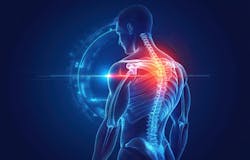When designing work procedures to prevent musculoskeletal disorder (MSD) risks, most of the focus is on physical risk factors such as posture, force and repetition. However, non-physical risk factors such as work organization or job stress should also be recognized to provide for a more holistic means to assess MSD risks.
A new report from the MSD Solutions Lab, Accounting for Non-Physical Risk Factors in MSD Prevention, grouped these risks into three categories:
Organizational – factors directly influenced or controlled by the employer and related to the way the work is designed, organized and managed.
- Work Organization
- Training
- Job control/autonomy
- Job security
Psychosocial – factors concerning interactions between and among work environment, job content, organization conditions, and workers’ capacities, needs and culture, that may influence health and work performance.
- Mental workload
- Job satisfaction
- Job stress
- Perceived support
Behavioral—actions a person engages in that can be modified or impacted by the workplace
- Amont of sleep
- Alcohol/substance use
- Tobacco use
- Nutrition, physical activity and body mass index
The report included a couple of tools to measure organizational risks:
NSC Safety Barometer: Measures safety culture and organizational risks. The survey contains 50 items across the following six categories: 1) management commitment 2) supervisor engagement 3) employee involvement 4) safety support activities 5) safety support climate and 6) organizational climate. Respondents are benchmarked against an NSC database of more than 1,400 other organizations to determine how organizations score compared to others.
• PSC-12 Scale (Hall et al., 2010): Assesses employees’ perceptions toward their organizations’ policies and regulations regarding employee psychological health (Loh et al., 2020). This validated scale measures psychosocial safety climate and only uses 12 items categorized into four domains: management support and commitment, management priority, organizational communication and organizational participation. A full list of items for this scale is provided in the Appendix.
The report offers the following conclusion: (This is an excerpt.)
Ignoring the need to control and mitigate non-physical risk factors within MSD prevention efforts can be a common reason MSDs are not decreasing in an organization. Therefore, non-physical MSD risk can and should be addressed and managed by employers. Many non-physical risk factors, such as work organization, job stress and health promotion, are modifiable by employers.
It is the responsibility of safety professionals to convey the threat of these factors to all levels of their organization to ensure modifications are made to mitigate organizational, psychosocial and behavioral risk factors.
Safety professionals should promote a holistic approach to MSD prevention, address non-physical risk factors and champion solutions reducing risks of injuries.
Only with everyone involved can these complex risk factors be properly addressed.
About the Author
Adrienne Selko
Senior Editor
Email [email protected]
Adrienne Selko is also the senior editor at Material Handling and Logistics and is a former editor of IndustryWeek.

